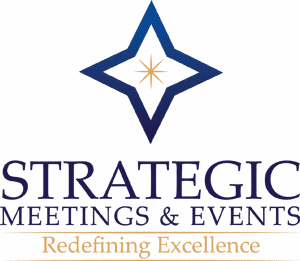Corporate Meetings Value – On the Trail
Corporate Meetings Value – On the Trail | After three years of auditing Pittsburgh companies’ books and doing taxes, Steve Maselko discovered that he did not want to be a certified public accountant after all.
This was in 1986, almost two decades before accountants for Enron and WorldCom would cast aside their profession’s stuffed shirt reputation. Burned out in his mid-twenties, Maselko made what would be a life changing decision to join Marriott International as an operational auditor, making sure Marriott hotels were upholding the brand’s standards.
“I thought it would be more interesting,” he says. “It involved lots of travel and staying at nice hotels around the world.”
 Along the way, he had to figure out almost everything about how Marriott hotels work. “I learned Marriott is driven by operating procedure, but I also learned there are exceptions,” Maselko says. “If the standard operating procedure doesn’t make sense, or someone else has a better idea, let’s use it. In auditing, everything is black and white.” Running a hotel requires creativity and an openness to alternate solutions, he adds.
Along the way, he had to figure out almost everything about how Marriott hotels work. “I learned Marriott is driven by operating procedure, but I also learned there are exceptions,” Maselko says. “If the standard operating procedure doesn’t make sense, or someone else has a better idea, let’s use it. In auditing, everything is black and white.” Running a hotel requires creativity and an openness to alternate solutions, he adds.
Maselko first dipped his toe into the incentive industry in 1989, when a position opened up as a marketing analyst in the Marriott Rewards division, just as a new fiancée made being on the road three weeks each month difficult. Maselko’s background digging through the nuts and bolts of how the company’s hotels really work got him the job of helping Marriott Rewards “build a better mousetrap,” he says. Writing the liability theory for Marriott’s gift certificates forced him to analyze business and leisure travelers, as well as incentive customers.
Several promotions and 16 years later, Maselko is vice president of development and finance for certificates and prepaid cards, overseeing sales and business development of individual incentive awards and consumer gift certificates and cards for the 1,200 hotels of Bethesda, Md.–based Marriott International. With brands ranging from Fairfield Inn to The Ritz-Carlton, this is a broad mandate.
For one thing, Marriott doesn’t own hotels, it manages them, so Maselko has to find gift card and certificate products that will not only attract consumers whether, incentive planners or the general public—he also has to convince property owners that those products will make them money. He notes that coupons had to prove themselves successful in generating trial stays at Marriott hotels in the United States, before they were rolled out in Europe and Asia a couple of years ago.
In fact, expanding Marriott’s gift card and certificate business outside the United States is the biggest challenge Maselko is facing right now. Aside from the obvious issue, attracting customers, each country has different laws governing this market. For example, in the U.S., gift cards and certificates cannot expire, while in Germany the minimum expiration date was just lowered from 30 years to three.
Complications like these helped convince Maselko to spend the past decade involved with industry organizations like the Society of Incentive & Travel Executives (SITE) and the Incentive Marketing Association (IMA). “When I joined SITE, my eyes were opened,” he says. “You had competitors in the same room talking about how to make business better for everyone.”
He also is a past president of the IMA’s Incentive Gift Certificate Council, a member of the IMA board and chair of the Professional Certification Committee. The latter created the Certified Professional of Incentive Management (CPIM) designation (which he promptly earned himself), a project he led after going through SITE’s own certification process, and realizing how helpful it was professionally. “I originally focused on gift certificates, not on the broader world of motivation,” Maselko says.
One of his current goals is to get SITE and the IMA to cooperate more closely. “Not that one organization should be subservient, but they need to work together,” he says. “A lot of my effort is directed toward this.”
Bhutan is one of the world’s few countries with a starkly preserved way of life, mainly because its king limits the number of annual outside visitors to this last remaining wholly Buddhist kingdom. But its leaders recently upped the number of visas to just under 10,000, and the kingdom’s first two luxury hotels opened within the past year: COMO Hotels’ Uma Paro and Amanresorts’ Amankora, making it an exclusive destination for small, intrepid incentive groups or individual award winners.
 Located in the Himalayas between Tibet to the north and India to the south, Bhutan is home to monks who roam among the people and more than 100 monasteries (known as dzongs) that dot the landscape. One not to be missed is the Taktsang “Tiger’s Nest” Monastery, built in the eighth century upon a cliff face, and reachable only by foot. Many Bhutanese still walk from place to place, not least because of the harrowing, winding mountain roads. They are required to wear the national dress: Gho for the men and kira for the women, which are colorful cotton or wool robes, intricately wrapped and tied around the body. These garments, along with other hand-woven textiles, can take up to nine months to complete. They make stunning souvenirs, but can run as high as $1,500 in price.
Located in the Himalayas between Tibet to the north and India to the south, Bhutan is home to monks who roam among the people and more than 100 monasteries (known as dzongs) that dot the landscape. One not to be missed is the Taktsang “Tiger’s Nest” Monastery, built in the eighth century upon a cliff face, and reachable only by foot. Many Bhutanese still walk from place to place, not least because of the harrowing, winding mountain roads. They are required to wear the national dress: Gho for the men and kira for the women, which are colorful cotton or wool robes, intricately wrapped and tied around the body. These garments, along with other hand-woven textiles, can take up to nine months to complete. They make stunning souvenirs, but can run as high as $1,500 in price.
Both the 29-room and suite Uma Paro and the 24-suite Amankora offer a variety of activities led by expert guides, include trekking, camping, mountain biking, temple and museum tours, and multi-day trips to other cities, such as the capital and cultural center of Thimpu. The Uma Paro also has a meeting room for up to 16 guests and houses the COMO Shambhala Retreat, a health and wellness center offering yoga and Ayurvedic treatments.
International cuisine is available, with local fare influenced by Indian dishes. Elsewhere chili peppers are merely an ingredient; here they are a dish unto themselves, says Ken Fish, president and CEO of New York–based Absolute Asia, which organizes trips to Bhutan. Fish recommends a five- to seven-day stay because “Bhutan is a total experience; it’s very pristine, very beautiful, and you have to get beyond Paro to really experience the country.” He adds that accommodations outside of Paro are comfortable but not deluxe.
In order to keep a handle on tourism, visitors are required to book through travel agents and must pay a daily surcharge. The only way in is on Bhutan’s Druk Air (meaning “dragon”) from Bangkok, Calcutta, Delhi or Kathmandu. The national language is Dzongkha, though English is the primary language for education and is quite common; U.S. dollars are widely accepted. Rates for the Uma Paro range from $210 for a deluxe room in the low season to $1,200 for a two-bedroom villa in high season, including breakfast. Amankora suites are $825 and $900 per night, including all meals, beverages, and airport transfers. Taxes are extra.
The prices definitely make Bhutan a luxury destination. “People who visit are wealthy,” agrees Fish, “but the costs [and controls] have, quite honestly, kept out the backpackers and the negative side effects” of overexposure.
Corporate groups are mixing business and pleasure again.
Better economic times mean more corporate dollars for travel and entertainment, including meetings. And along with that, corporate groups are adding a few niceties back into their corporate meetings value.
At the same time, however, the recent lean years left companies with a legacy of austerity that has made return-on-investment the catchphrase of corporate America. Thus, companies now strive to ensure that employees receive as much value as possible when taking time away from the office to attend a meeting.
“People are willing to have a little bit of fun again, but the educational part is really practical, like computer training that’s applicable to people’s jobs,” says Steve Enselein, group sales executive director for Hyatt Hotels in Chicago.
Illustrating what Enselein calls a return to normalcy were the dinner menus at corporate executive-level meetings held by a telecommunications company at the Hyatt Regency O’Hare in 2002 and then again last year.
Of the 2002 meeting, Enselein said, “We actually served them meatloaf.”
By contrast, he says, “Last year, once again they had a dinner that was like a restaurant meal.”
But there’s an accompanying rigor to all this. While companies may be loosening their purse strings for meetings, it comes with a catch, says Christy Lamagna, president of New York-based Strategic Meetings and Events.
“More money is available, but a lot of corporate meetings value must have educational components,” she says. “Even incentive trips have some take-away.”
Lamagna planned an incentive trip last year in Lake Tahoe in which an incentive staple, the dine-around, served to deliver business objectives as well.
Winners consisted of the top performers in the company’s three regional sales divisions. Each division went to a different restaurant, where the sales reps hashed out their corporate divisional goals for the coming year.
“People sat around a roaring fire, drinking hot toddies, and talking about what was possible for the year,” Lamagna recalls. “It was interesting to see the way they mixed leisure and business. It felt like they were just chatting, but it was a working session. Someone was sitting on a bar stool taking notes.”Some companies make a statement with their meeting dollars, says Marilyn Hauck, president of The Complete Conference in Sacramento, Calif.
“Money is spent to deliver specific messages,” Hauck says. “You can still put a meeting in a four- or five-star resort but cut back on the banquet. If the sales reps haven’t made the goals, then maybe there won’t be gifts or covered chairs or big flower arrangements. That sends the message that the corporate company is not making the kind of money that justifies extra spending. They’ll get the message, because they know what they got before.”
Hauck notes that even though there are fewer constraints on spending, controlling finances is a persistent holdover from tougher times.
“In the past, if someone had an idea for a fun thing to do for a corporate banquet, we might have just gone ahead and done it. But now expenditures have to be justified and fit the corporate strategy.”
Tags: Corporate Meetings Value On the Trail, Corporate Meetings Value, Event Planning, Event Planners, Strategic Planners, Strategic Events, Corporate Meetings Value, Corporate Events, Successful Meetings





